#American Indian history
Photo

Ma-ah-go-quah, wife of John Big Fout (or Big Foot), of the Potawatomi Tribe, on July 16, 1923.
Record Group 75: Records of the Bureau of Indian Affairs
Series: Photographs
Image description: An elderly woman seated in a chair in front of an exterior wall. She is wearing a blouse with a long ruffle around the neck, a floral skirt, and a wide fabric headband. She has a blanket partially pulled over her lap. Her hands are clasped in her lap.
#archivesgov#July 16#1923#1920s#portrait#Native American history#American Indian history#Indigenous American history#Potawatomi
163 notes
·
View notes
Text

Just realized that the 50th anniversary of the Wounded Knee Occupation started like a week ago. (Feb 27 - May 8, 1973) For 71 days, 200 Oglala Sioux and AIM activists occupied the town of Wounded Knee, South Dakota, on the Pine Ridge Indian Reservation in opposition to the corruption of tribal chairman Richard Wilson and centuries of failure by the US Government to honor treaties with native peoples. The town would be besieged by federal forces (US Marshals, FBI, SD National Guard) and GOON (a paramilitary force run by Richard Wilson). 5 people were killed, and 16 wounded during the siege. On May 5, an agreement was reached between leaders of the occupiers and the feds. By May 8, the town had been evacuated, and the US Government seized control. The occupation saw significant public support and helped bring light to issues facing indigenous peoples within the US. Issues they continue to face and fight to this day, 50 years later. (For example, there are around 4200 to 5700 unsolved cases involving murdered or missing indigenous women, as of 2021)
#AIM#american indian movement#wounded knee#wounded knee 1890#wounded knee 1973#pine ridge reservation#indigenous history#american indian history#mmiw#missing and murdered indigenous women#american history#indigenous history is american history#land back#yes all of it
73 notes
·
View notes
Text
American Indian Discrimination and Issues
If you want the links to important causes just skip towards the end, but I implore you to read through what I’ve written as it’s important as well!
I think it’s a major disservice that barely anyone talks about the fact that the Federal Government doesn’t recognize members of tribes whose land was taken from them. Obviously most of the US is stolen land but in the mid 1900s the Federal government terminated Indian land rights to “assimilate” Indian people, and without an official land base it’s harder to congregate and act as a sovereign nation, therefore they aren’t eligible for federal recognition. Furthermore, in 1900 the Bureau of Indian Affairs didn’t do a complete consensus of the US and missed places where Indians lived, meaning members of indigenous communities were missed and not represented on the census data. One of the criterion to becoming a federally recognized tribe is the demonstration “that it has been identified as an American Indian entity on a substantially continuous basis since 1900.” (R. Lee Fleming, Director of the Office of Federal Acknowledgement).
Some of you may also be wondering why federal acknowledgement is so important. For starters, American Indians are the poorest ethnic group in the US. Federally recognized tribes are permitted to open up casinos in places that do not permit gambling because these tribes have the status of being a sovereign nation. While these casinos are able to provide for many Indian families and make improvements to reservations, this income isn’t extended to those with tribal ancestry who aren’t apart of those Federally recognized tribes. You also can’t get financial assistance from the Bureau of Indian Affairs if you’re not from a Federally recognized tribe. This means that any federal programs, health insurances, grants, reparations, etc. are not provided.
There is also a large chunk of American Indian history that is erased from the knowledge of the general public - such as the fact that they weren’t granted US citizenship until 1924, 56 years after African Americans were granted it, or the fact they were also subjected to Jim Crow laws and racial segregation in the South, or the Red Power movement as a whole.
I think it’s important to understand the struggles American Indians have faced and still face to this day - having the highest likelihood than any other race of being killed in a police encounter (3x the rate of White Americans, 2.6x the rate of Black Americans), having an incarceration rate 38% higher than the national average and receiving harsher sentences than White, Black, and Hispanic offenders, having the highest rate of violent crime victimizations compared to every other race with around 70% of those committing hate crimes not being of the same race as them, with 46% of the perpetrators being complete strangers to the victim, and 75% of sexual assaults against them being committed by strangers or acquaintances (according to the Bureau of Statistics )- whereas amongst the general population only 58.5% of sexual assaults are committed by strangers or acquaintances (RAINN).
They also have the lowest median household income out of all races in the US (data from 2022). Furthermore, the American Indian population is rarely mentioned in discussions about the racial wage gap despite the fact that they make nearly the same (only one cent more) earnings per dollar as Black Americans do (US Department of Labor) relative to White American earnings and having a lower share of income than every other race. Nor is it mentioned that American Indian women on average are paid less than Black Women (who are often more focused on by the media) when looking at the racial gender gap (National Partnership for Women and Families).
Another issue that is rarely addressed is the poor access and racism faced in terms of health care. The leasing causes of death for American Indians are heart disease (25% of deaths), cancer (22%), and accidents (19%). There are many diseases that affect American Indians at a higher rate than the general population as well. However, they also are more likely to not receive medical assistance because of the cost and much less likely to have visited a dentist as well, putting them more at risk for dental related illnesses. 33% of American Indians also do not have health insurance either. Furthermore, the Indian Health Service (the Federal Department dedicated to providing American Indians with Health Care services) has had its funding cut multiple times within the past two decades (with a $800,000,000 cut in 2013) making it harder to provide adequate health care for them.
I would also like to state that I’m not trying to diminish the discrimination, racism, and pain that other people of color undergo, nor am I trying to devalue or discredit their experiences. All people of color deserve justice and equality . I’m just trying to raise awareness to the fact that American Indians face a lot of discrimination at higher rates but are less focused on in the media. Overall, I just think that it’s important to draw more attention to the issues that they face and different ways to combat those issues.
Some American Indian Organizations and Causes to support are:
The Indigenous Media Freedom Alliance whose goal is to aid American Indians in being seen and heard in independent media. https://imfreedomalliance.org/
C.O.P.E. which aims to help Najavo people who live with chronic illnesses & improve the wellbeing of American Indians. https://www.copeprogram.org/aboutus
Land Back which fights for the return to indigenous lands in the US to their peoples. https://landback.org/
The American Indian Community House which aims to improve American Indian wellbeing and increase the visibility of American Indian cultures in urban settings. https://aich.org/about/
C.H.I.R.P. which originally served to research, preserve, and document the history & culture of the Nevada City Rancheria Nisenan Tribe. However, it now serves as a way to support their people after it was no longer recognized by the Federal government, leaving them without access to programs that support their health and well-being. https://chirpca.org/
Diné C.A.R.E. which defends Najavo communities against exploitative and destructive environmental practices and issues. https://www.dine-care.org/about-us
Hopi Relief Fund which aims to distribute the necessary supplies to aid community members in their recovery of the Covid-19 crisis. https://hopirelief.org/about-us
Indigenous Roots which uses art and activism to promote opportunities for Indigenous peoples, such as local classes, scholarships, artist grants, art installations, etc. https://indigenous-roots.org/
Intertribal Friend House whose mission is to expand resources for American Indians so that they can stay connected to their culture. https://www.ifhurbanrez.org/
The National Urban Family Coalition which advocates to bring awareness to the struggles that American Indians living in urban areas still face. https://www.nuifc.org/
R.J.I.P. which focuses on bringing justice to American Indian victims and addressing the disproportionate rates at which American Indians are victimized. https://www.indigenousjustice.org/
Sogorea Te’ Land Trust which focuses on returning Indigenous Land to indigenous people (similar to Land Back). https://sogoreate-landtrust.org/
N.A.D.L.C. which advocates for American Indians with disabilities. https://www.nativedisabilitylaw.org/
AISES https://www.aises.org/about/history
https://nativephilanthropy.candid.org/timeline/era/indian-self-determination-and-self-governance-era/#timeline-content
I also implore you to also check out these American Indian and Indigenous Businesses:
Cheek Bone Beauty https://www.cheekbonebeauty.com/
Sḵwálwen Botanicals https://skwalwen.com/
Prados Beauty https://pradosbeauty.com/
Ah-Shí Beauty https://www.ahshibeauty.com/
Satya Organic Skincare https://satyaorganics.com/
The Yukon Soaps Company https://yukonsoaps.com/
Blended Girl Cosmetics https://blendedgirl.com/
Sequoia Soaps https://sequoiasoaps.com/
Sister Sky (Haircare) https://sistersky.com/
Quw'utsun Made https://www.firstpickhandmade.com/personnel/quwutsun-made/
Ginew https://ginewusa.com/
B.yellowtail https://byellowtail.com/
Eighth Generation https://eighthgeneration.com/
Lauren Good Day https://laurengoodday.com/
Urban Native Era https://urbannativeera.com/
OXDX Clothing https://www.oxdxclothing.com/
Beyond Buckskin Boutique https://shop.beyondbuckskin.com/
Liandra Swim https://liandraswim.com/en-us
Lesley Hampton https://lesleyhampton.com/
Haus of Dizzy https://hausofdizzy.com/
#american indian#land back#american indian discrimination#racial justice#racial equality#racialdisparities#racial discrimination#indigenous#indigenous rights#american indian rights#indigenous movements#red power movement#indigenous history#american indian history#american indian businesses#indigenous business#indigenous businesses#american indian charities#indigenous charities
3 notes
·
View notes
Text
Useful background for allies who want to help debunk white, evangelical Christian objections to ICWA that claim reverse racism. It also explains why the foster system's definition of family doesn't meld well with indigenous views, and can be weaponized against native people in order to remove children.
#ICWA#Indian Children's Welfare Act#Anerican Indians#American Indian history#Indigenous America#NDNs
10 notes
·
View notes
Link
2 notes
·
View notes
Text
Jamestown, North America's First Permanent English Colony, Could Soon Be Underwater | Smart News
Jamestown, North America’s First Permanent English Colony, Could Soon Be Underwater | Smart News
The English settlement at Jamestown, Virginia was established in 1607.
Pi3.124 via Wikimedia Commons under Creative Commons Attribution-Share Alike 4.0 International
When a group of English men and boys arrived in Chesapeake Bay in April 1607, starvation and disease awaited them. Now, the site of their arrival—and the first successful English colony in North America—is under threat. Thanks to…

View On WordPress
#African American History#american history#American Indian History#climate change#colonialism#England#flood#Native American History#Native Americans#Water
0 notes
Link
#charles curtis#american history#american indian history#american presidents#herbert hoover#native americans#history stuff
0 notes
Text

#happy thanksgiving#thanksgiving#indigenous#native american#american indian#indian#history of thanksgiving
426 notes
·
View notes
Text
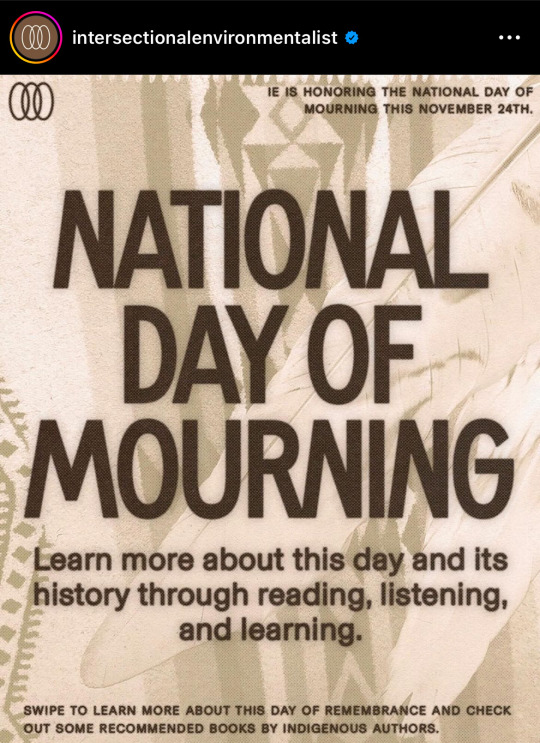



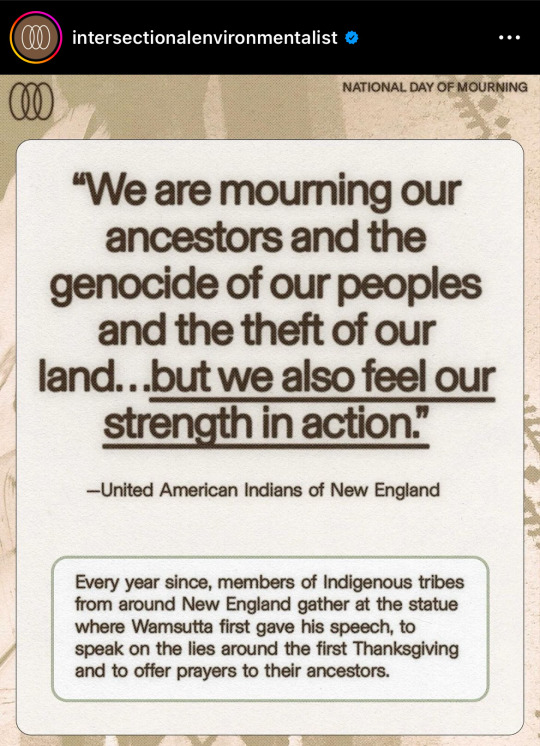
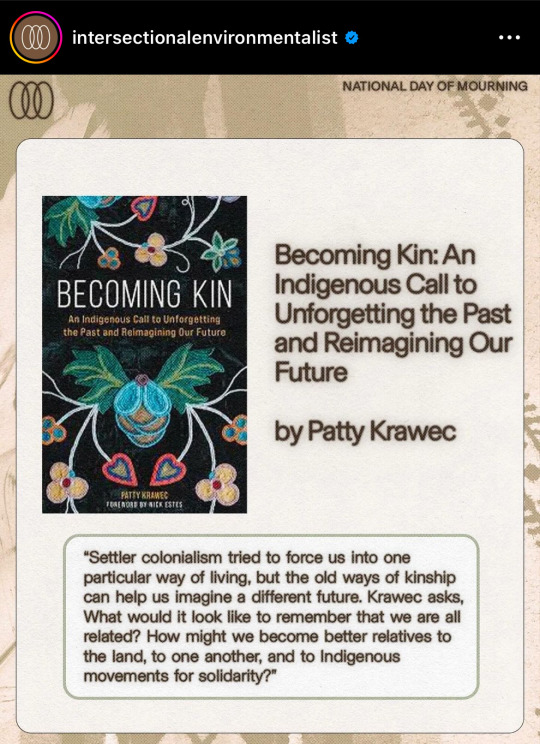
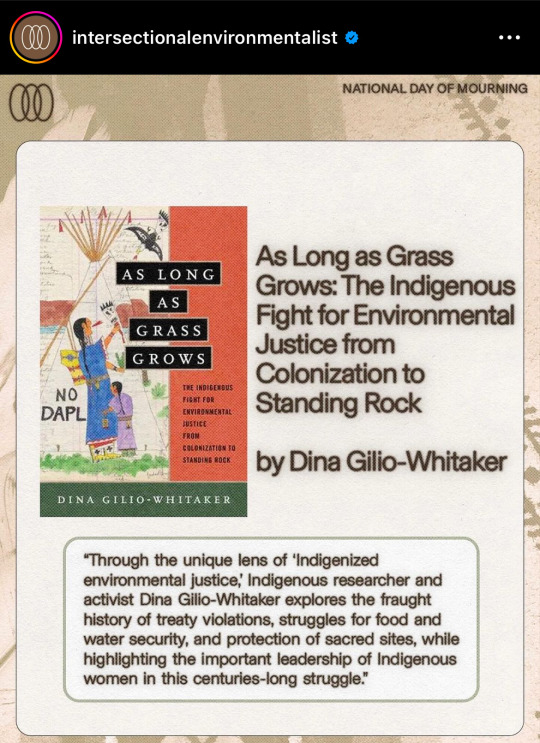



the org said they were reposting last year’s graphics, hence the change is date at the top. still extremely relevant!
#resources#bipoc#indigenous#native american#american indian#national day of mourning#thanksgiving#undescribed#reaux speaks#history
207 notes
·
View notes
Text
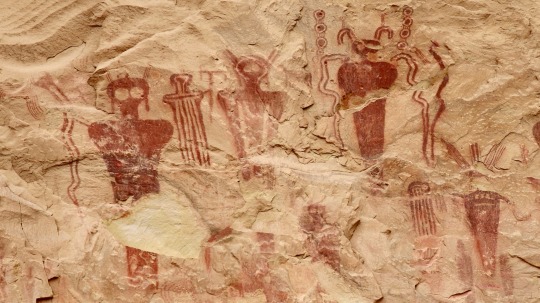


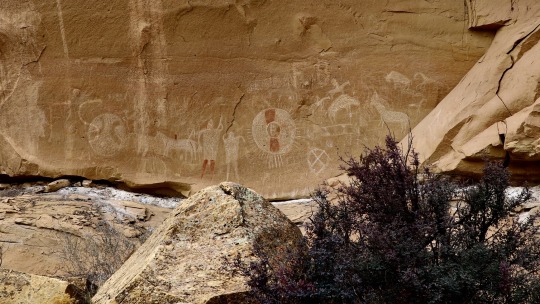
#Ute#Fremont#barrier style#pictographs#petroglyphs#American Indian#art#history#archaeology#adventure#travel#my photo#desert#southwest#utah#photography#aesthetic#sego canyon rock art interpretive site#aka#Thompson wash rock art district
108 notes
·
View notes
Photo
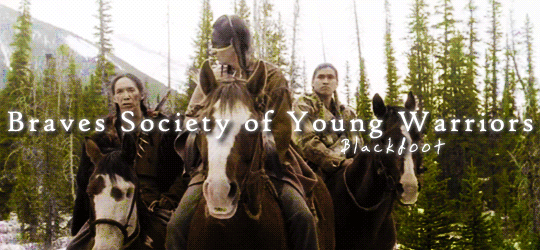

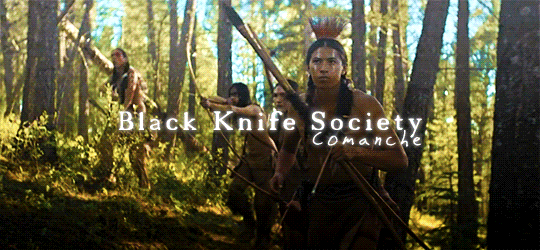

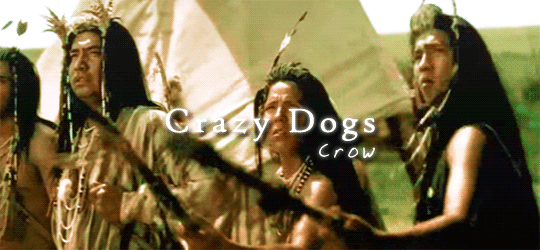
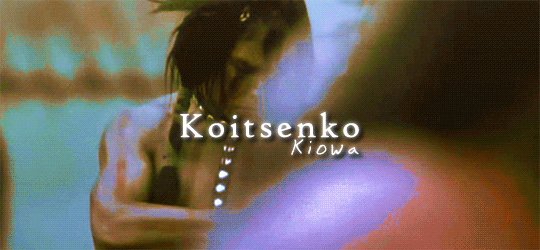


[image description: gifs stacked vertically of Native American warriors of various tribes, in traditional attire and in the fashion of their tribe. Text overlays on top of each gif, labeled, in order: “Brave’s society of Young Warriors, Blackfoot.”, “Women Warrior’s Society, Cheyenne.”, “Black Knife Society, Comanche.”, “Okichitaw, Cree.”, “Crazy Dogs, Crow.”, “Koitsenko, Kiowa.”, “Kit Fox Society, Lakota.”, “Iruska, Pawnee.”. end image description.]
Plains Native American Warrior Societies
(not an exhaustive list)
#historyedit#history#native american#plains native#plains indian#ndn#indigenous#native american history#first nations history#american history#canadian history#justin's edits
418 notes
·
View notes
Photo

Cliff Palace, the Ancestral Pueblo cliff dwellings at Mesa Verde, photographed on July 27, 1923.
Record Group 95: Records of the Forest Service
Series: Photographs Relating to National Forests, Resource Management Practices, Personnel, and Cultural and Economic History
Image description: We can see a couple dozen of the sandstone-and-mortar rooms that make up the Cliff Palace site. The rooms mostly have sharp corners, but a few are round. They are built under an overhanging cliff.
#archivesgov#July 27#1923#1920s#Cliff Palace#Mesa Verde#mesa verde national park#Ancestral Pueblo#Native American history#American Indian history#Indigenous American history#or prehistory I suppose#archaeology#Colorado
129 notes
·
View notes
Text

The Song of the Talking Wire, Henry F. Farny, 1904
#art#art history#Henry F. Farny#genre painting#Native American#American Indian#American West#Old West#Wild West#American art#Western art#20th century art#oil on canvas#Taft Museum of Art
296 notes
·
View notes
Text
Reminder that June 2nd this year will mark the 100th anniversary of the Indian Citizenship Act (also know as the Snyder Act) which granted American Indians and Alaskan Natives full citizenship in the United States!
#june 2nd#indian citizenship act#snyder act#june 2nd 2024#american indian history#alaskan natives#american indians#indigenous history#history
0 notes
Text
Happy Native American History Month!
There are several Native American sign languages, but Plains Indian Sign Language (PISL), also known as Hand Talk, is the most well-documented. This is the sign language of tribes in the plains region of the United States – Crow, Cheyenne, Flathead, Rocky Boy, etc.
PISL is interesting because, while it certainly helps D/deaf members of the tribes, it was historically used by hearing members for everything from communicating when spoken language wasn't an option (e.g., hunting, talking at a distance) to communicating when two people did not share a spoken language.
PISL is also interesting because, unlike many other sign languages I've encountered, facial expressions do not appear to be very important to the language's syntax. You can see an example of this in these two videos:
American Sign Language & Plains Indian Sign Language (PISL)
Comparing American Sign Language & Crow Sign Language (PISL)
If you would prefer a video with English audio translating the PISL, check out the Plains Indian Sign Language: Storytelling with Lanny Real Bird and Harry Sitting Bear video. Don't worry if you can't read the text on-screen for the first six seconds, that's just the video title.
138 notes
·
View notes
Text
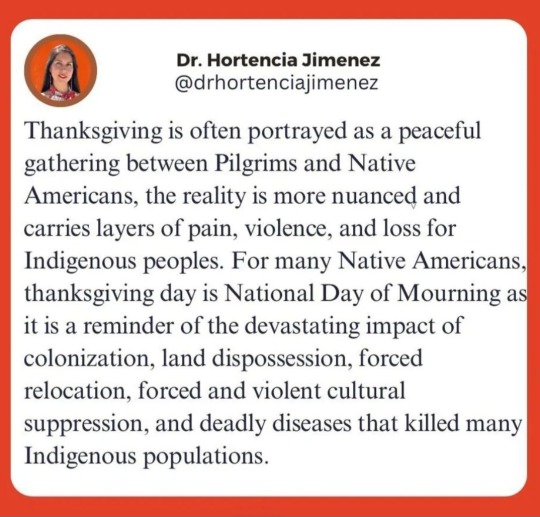
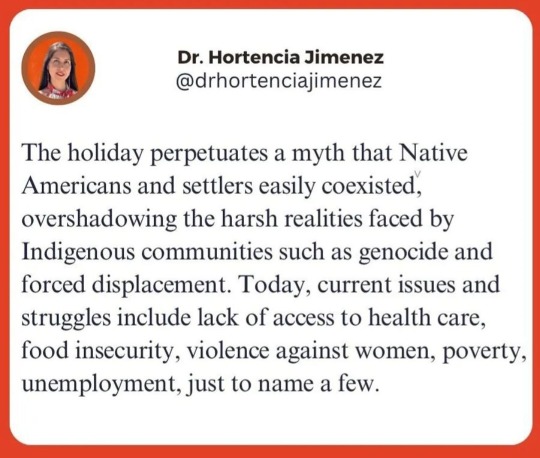
Happy Thanksgiving to all who celebrate! May this be a time of gratitude, joy, and love for you and yours.
I would also suggest making this a time to acknowledge the National Day of Mourning by honoring, remembering, and learning about the death and suffering of indigenous Americans due to settler colonialism and its present-day effects.
Again, I hope everyone has much to be thankful for in these holiday times. I also hope these times can serve as an opportunity to take a clear-eyed look at American history and challenge the myths that serve as the foundation for many Amercians' understanding of our past and present.
#thanksgiving#happy thanksgiving#history#genocide#ethnic cleansing#american indians#native americans#politics#us politics#progressive#imperialism#narional day of mourning#colonialism#settler colonialism#indigenous history#thanksgiving myths#first nations
93 notes
·
View notes